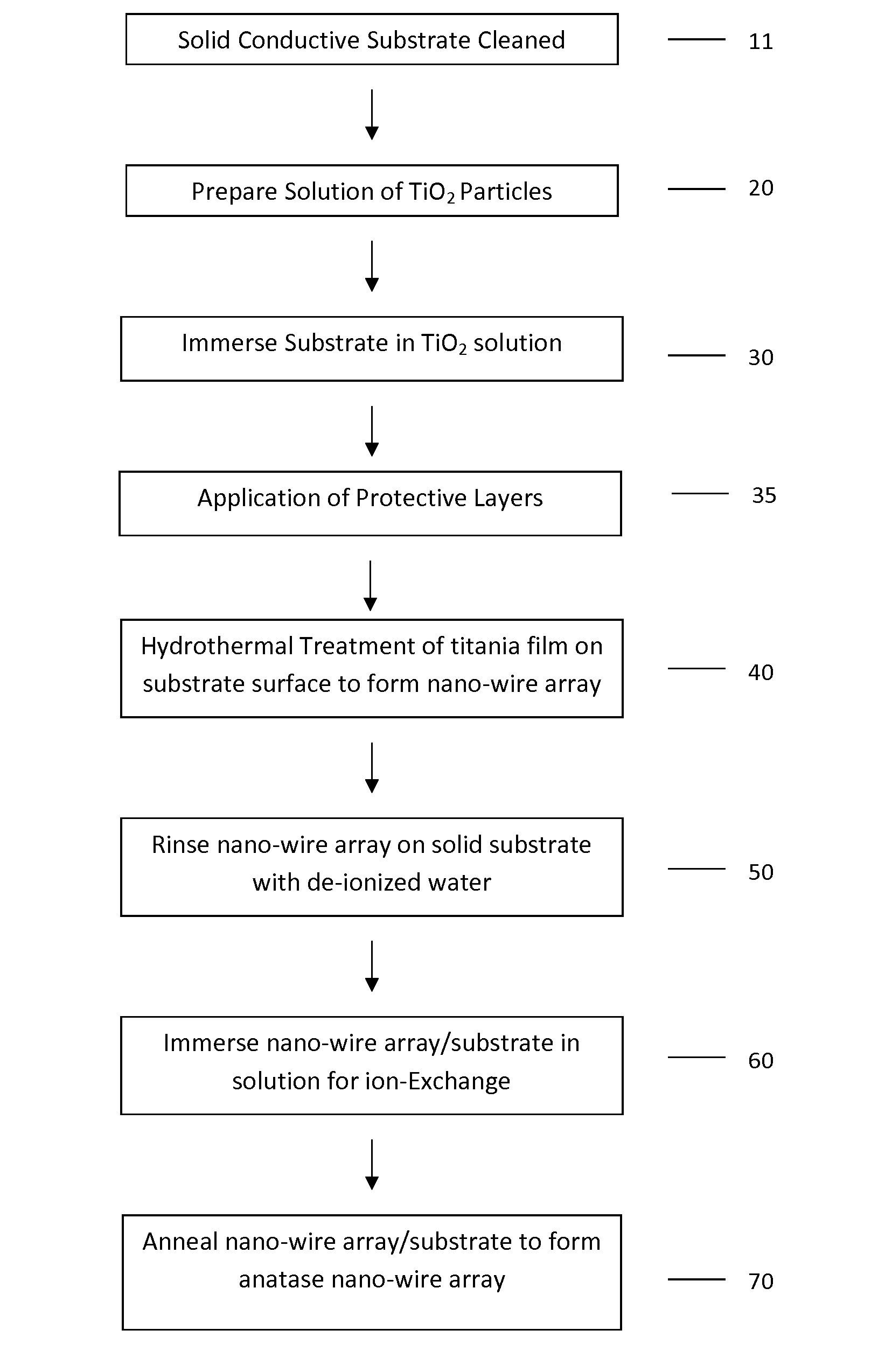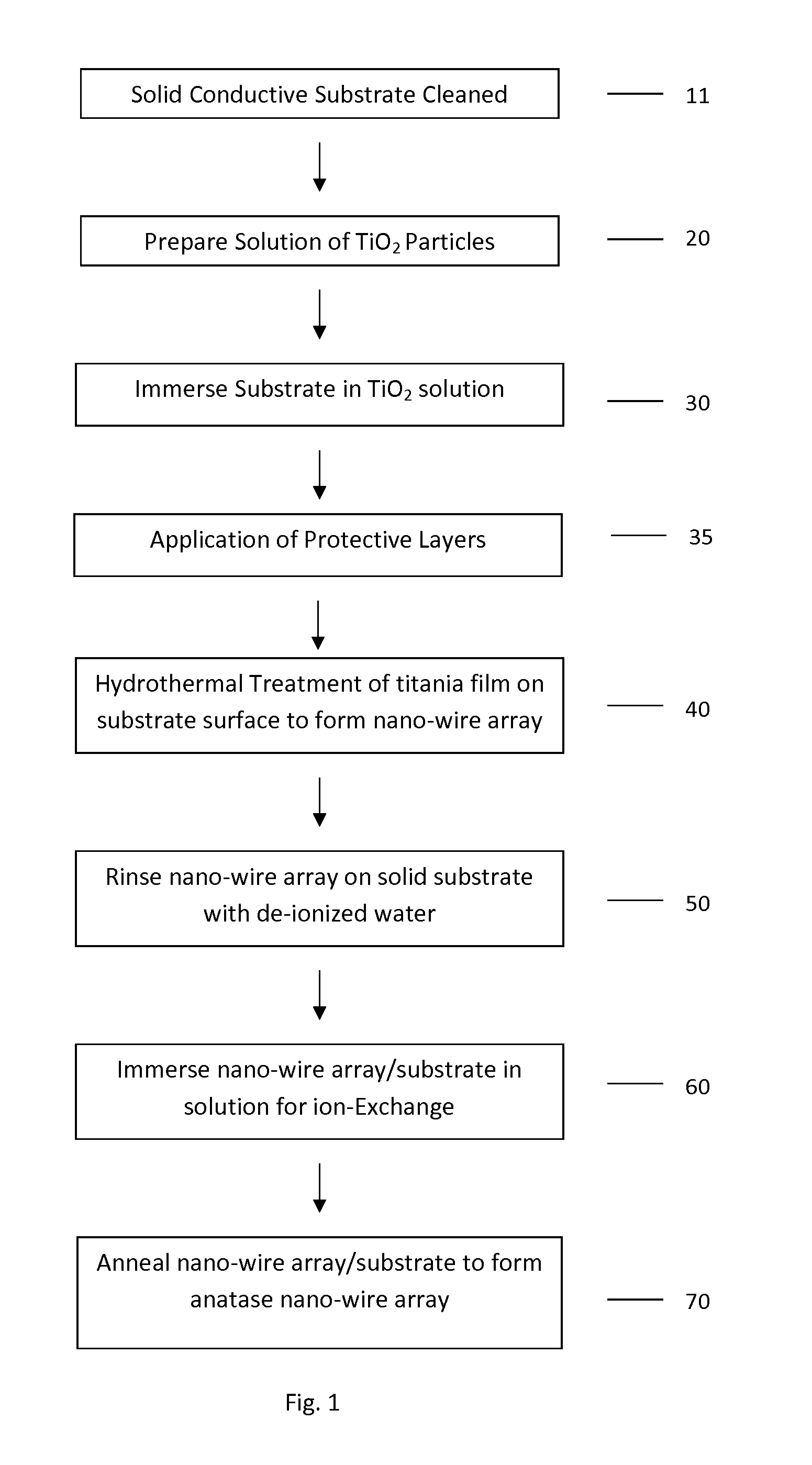Integrated charge production architecture
a charge production and integrated technology, applied in the field of renewable energy production, can solve the problems of emission within the high surface area basal plane of nanowires, and achieve the effects of reducing the amount of radiation, broad spectrum absorption and charge production, and rapid charge separation and transportation
- Summary
- Abstract
- Description
- Claims
- Application Information
AI Technical Summary
Benefits of technology
Problems solved by technology
Method used
Image
Examples
example 1
[0154]A Ti02 solution can be made using 0.1 g to 0.4 g of P25 nanoparticles in 10 ml of solvent which can be, for example, 3 ml titanium tert-butoxide in 7 ml ethanol. Solution dispersion is enhanced by stirring for an extended period, approximately 5-20 min. A FTO-glass substrate, was immersed in the Ti02 solution between 30 seconds and 180 minutes, and more preferably between 3 min and 60 min. After deposition of the several micron thick Ti02 film, the substrate was taken out from the solution and annealed at 500° C. for 1 h to remove any residual organics. After this step, a protective Teflon coating was sprayed onto the back (non-TCO covered side) of the glass substrate.
PUM
| Property | Measurement | Unit |
|---|---|---|
| temperatures | aaaaa | aaaaa |
| wavelengths | aaaaa | aaaaa |
| wavelengths | aaaaa | aaaaa |
Abstract
Description
Claims
Application Information
 Login to View More
Login to View More - R&D
- Intellectual Property
- Life Sciences
- Materials
- Tech Scout
- Unparalleled Data Quality
- Higher Quality Content
- 60% Fewer Hallucinations
Browse by: Latest US Patents, China's latest patents, Technical Efficacy Thesaurus, Application Domain, Technology Topic, Popular Technical Reports.
© 2025 PatSnap. All rights reserved.Legal|Privacy policy|Modern Slavery Act Transparency Statement|Sitemap|About US| Contact US: help@patsnap.com



